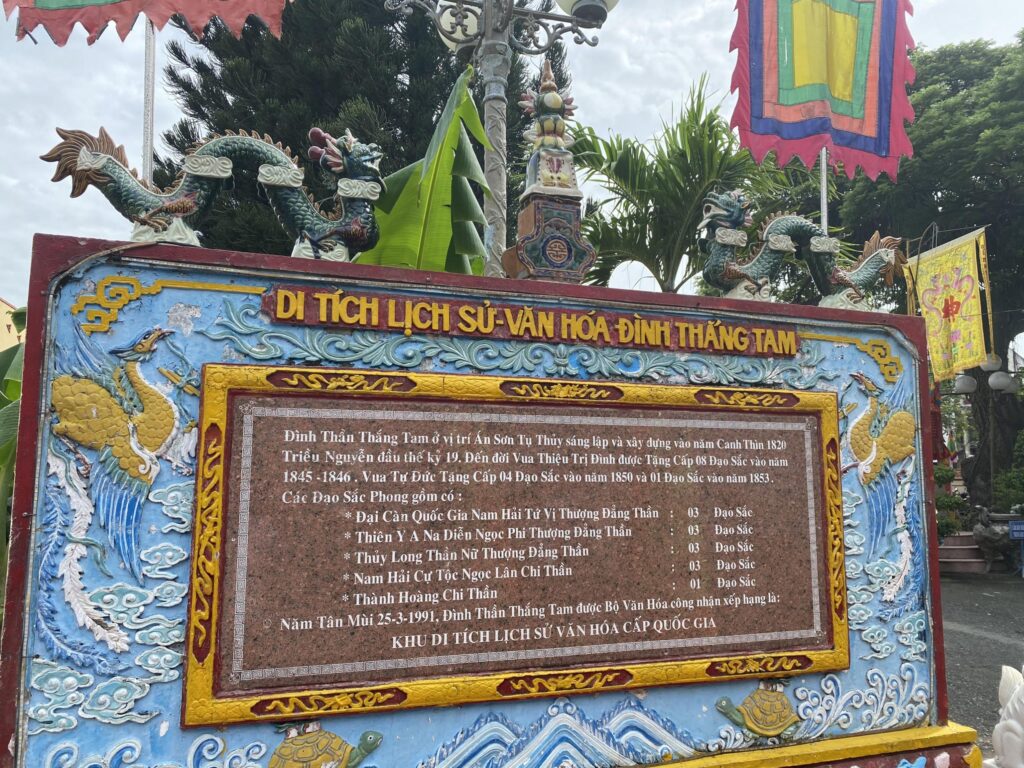The Temple of Saint Trần Hưng Đạo is located at 68 Hạ Long Street, Vũng Tàu Ward, Ho Chi Minh City (formerly Vũng Tàu City). Construction began in 1955 and was completed in 1957. The temple is a sacred place where people honor and remember the great merits of Grand Prince and Supreme Commander Trần Quốc Tuấn, one of Vietnam’s most revered national heroes.
Historical and Cultural Significance
In Vietnamese spiritual life, Saint Trần occupies a unique place. He was not only a brilliant general who led Đại Việt to victory three times against the Mongol Empire, but he is also venerated as a divine protector of the nation.
The establishment of his temple in Vũng Tàu symbolizes the deep gratitude and spiritual reverence of local residents as well as visitors from across the country.
Since its inauguration, the temple has been overseen by three head trustees:
- Elder Nguyễn Văn U
- Elder Đồng Thái Nghi
- And currently Trần Quang Châu
The temple’s administrative board includes 5 vice trustees and 14 members responsible for rituals, management, incense offerings, and organizing the annual ceremonies.

The Death Anniversary of Saint Trần Hưng Đạo in Vũng Tàu
Date: 20th day of the 8th Lunar Month
Location: Trần Hưng Đạo Temple, 68 Hạ Long Street, Vũng Tàu
The old folk verse:
“Dù ai buôn xa bán xa,
Hai mươi tháng Tám giỗ Cha thì về.”
reminds generations of Vietnamese to return home each year for the death anniversary of the revered national hero.
Every year, the ceremony is held with solemnity. Locals and visitors gather to offer incense, flowers, and ritual offerings to honor his legacy. The main ceremony takes place in a dignified, sacred atmosphere with rituals such as:
- Offering sacred gifts to the Saint
- Reciting his merits and heroic deeds
- Incense offering and sharing blessed offerings
- Prayers to honor temple founders and wandering souls
Traditional Values Reflected in the Ceremony
Unlike other regions, the death anniversary ceremony in Vũng Tàu focuses primarily on the solemn ritual rather than festive activities.
On the main day, the temple becomes crowded but remains orderly. Worshippers bring offerings such as sticky rice, boiled chicken, roasted pork, incense, flowers, and fruit to reverently honor the Saint.
There is only a symbolic lion dance for good fortune—no additional entertainment—yet the event still attracts thousands of worshippers. Each stick of incense represents a heartfelt tribute and a prayer for peace and prosperity.

Saint Trần in the Hearts of Vietnamese People
Trần Quốc Tuấn, son of Prince Trần Liễu and Lady Nguyệt, was the soul of Vietnam’s resistance against the Mongol invaders. Placing the nation’s interests above all, he united the army and the people, inspiring loyalty and strength.
He passed away on the 20th day of the 8th Lunar Month in 1300 at Vạn Kiếp (present-day Chí Linh, Hải Dương). After his death, the Trần Dynasty bestowed upon him the title:
“Grand Chancellor, Supreme Father of the Nation, Virtuous and Martial Grand Prince Hưng Đạo.”
The people, however, simply call him Saint Trần.
More than seven centuries later, his legacy remains deeply rooted in the hearts of the Vietnamese as a protective spiritual father figure. Wherever his temples stand, solemn ceremonies are held each year—embodying the Vietnamese tradition of “remembering our roots.”
Visitor Information
Name: Trần Hưng Đạo Temple
Address: 68 Hạ Long Street, Vũng Tàu Ward, Ho Chi Minh City
Opening Hours: All day (most crowded on the 20th day of the 8th Lunar Month)
Main Activities: Incense offering, annual death anniversary ceremony, sightseeing, and worship








